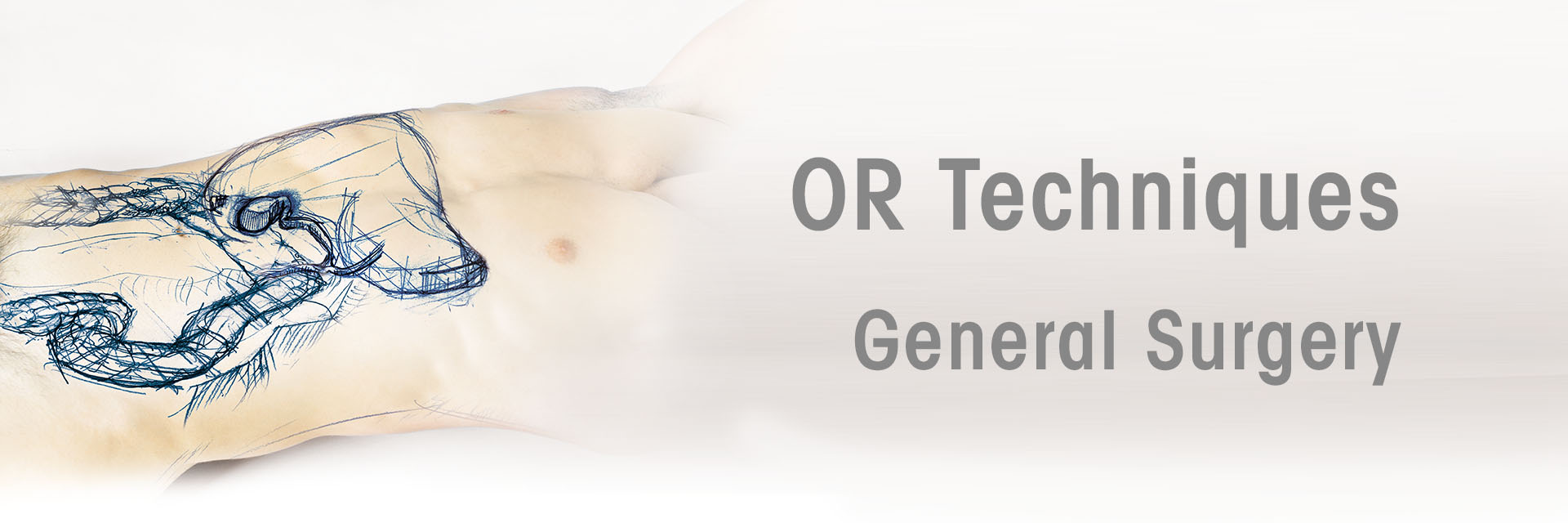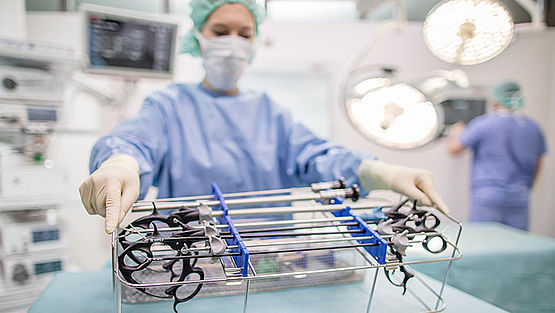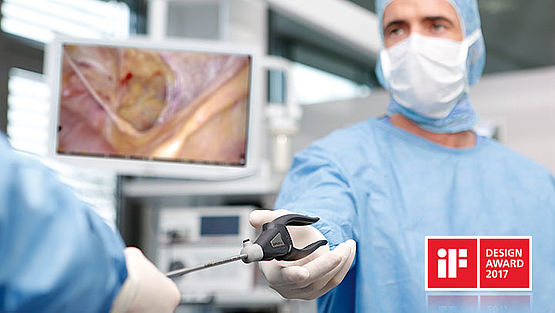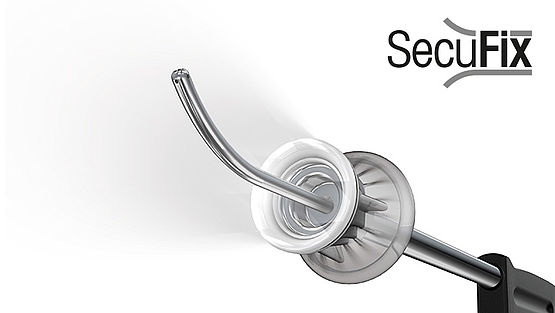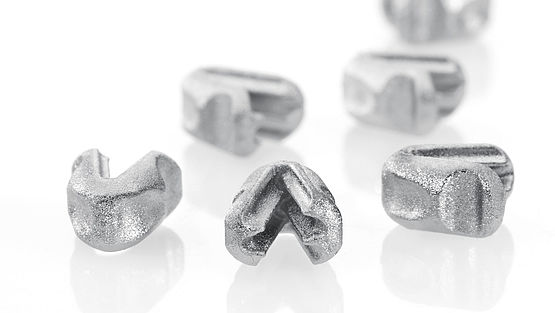Surgical techniques
Minimal Invasive Surgery (MIS), or laparoscopic surgery, is a technique applied in visceral surgery and allows interventions below the abdominal cavities by means of an optical instrument. It is used to create diagnoses and carry out certain operations and is now an established surgical procedure.
The success of an operation or treatment hinges on both the surgeon's skill and having the right set of instruments. Minimal Invasive Surgery has become an established technique in recent years and has made tremendous medical progress.

Laparoscopic Surgery , also known as keyhole surgery, comprises safe established and minimally invasive that have replaced numerous open surgical operations . These procedures reduce trauma and wound healing disorders and are therefore seen as patient-friendly. This advanced technology permits a broad range of laparoscopic operations, from standard interventions, such as cholecystectomy, appendectomy or inguinal hernia, through to advanced interventions such as laparoscopic rectal resections, as well as the laparoscopic gastric bypass or sleeve in the field of bariatric surgery.
Products for this technique

The trend towards increasing patient-friendly operating procedures is creating a higher demand for instruments with minimized diameters. This is where minilaparoscopy offers the cosmetic advantages of NOTES or the single-port technique, without the associated drawbacks and risks presented by complex operating procedures and long learning curves. An interdisciplinary procedure that can be used in laparoscopic surgery, gynecology and urology.
Interventions with a small outer diameter of just 3.5 mm and the use of suitable instruments leave only the smallest, barely visible scares. The trauma of the surgery is likewise minimized, and this can significantly shorten the patient's hospital stay. It is also repeated that patients feel less pain. Surgeons can simply perform their familiar technique using narrower diameter instruments.
The successful ERAGONmodular concept was used as a basis to develop a new generation of three-part modular 3.5 mm instruments that also satisfy the toughest standards in hygiene and application technology. These instruments are used in both adult and pediatric surgery.
Minilaparoscopy, an ingenious and contemporary surgical procedure, is already an established standard in the fields of cholecystectomy and appendectomy.
Products for this technique
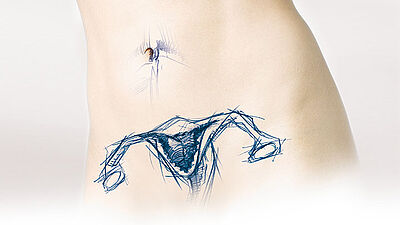
Gynecological laparoscopy is becoming an increasingly important field. The development of patient-friendly, minimally-invasive hysterectomy procedures and the associated beneficial surgical outcomes combined with significantly shorter periods of rehabilitation. This has led to interventions like hysterectomies being performed laparoscopically in many cases.
Operations performed in gynecological laparoscopy:
Hysterectomy
TLH (Total Laparoscopic Hysterectomy)
LASH (Laparoscopic Supracervical Hysterectomy)
LAVH (Laparoscopic Assisted Vaginal Hysterectomy)
Myomectomy
Ovarectomy
Salpingectomy
Urogynecology
Fertility surgery
Ectopic pregnancies
Endometriosis
Oncology
Products for this technique

Transanal Endoscopic Microsurgery (TEM) is used to treat diseases of the rectum. The generic term is colorectal surgery and includes operations on benign or malignant tumors. The operation can be performed using conventional or laparoscopic techniques.
Benign conditions that require intervention are often diverticular diseases. Diverticulitis is a disease of the colon, an inflammation caused by herniation of the mucosa. This often affects the colon sigmoideum (sigma diverticulitis – also referred to as "left-sided appendicitis"). Most operations on colon and rectum tumors can be performed laparoscopically. This depends on the size and location of the tumor and the surgeon's experience...
If you want to see the surgical video, register or log in.
Register now Log in now
Products for this technique

Pediatric surgery is an autonomous discipline of surgery and covers the Area from newborn to teenager. Pediatric surgeons therefore have to be familiar with the particular characteristics and growth phases of their patients in relation to the age of each individual. Nowadays, minimally-invasive techniques are naturally common practice in this area of medicine.
All areas of abdominal, thoracic and tumor surgery through to pediatric urology and orthopedics are covered. One focus in pediatric surgery relates to malformations. These diseases are generally not restricted to a single organ system and this is why pediatric surgeons rarely specialize in a single organ, as is the case in adult surgery. Pediatric surgeons base their operating techniques on adult surgery, although specific characteristics relating to the young age of their patients generally make it necessary to adopt a special procedure.
This means that particular specifications have to be observed for operating techniques and in the technical development of instrument sets in order to take account of the requirements of young patients. Pediatric surgeons therefore often adopt independent approaches.
Richard Wolf has also taken up this challenge and works together with experienced pediatric surgeons to develop specialized individual endoscopy systems and instruments tailored to this specialist area...
If you want to see the surgical video, register or log in.
Register now Log in now
To Pediatrics


